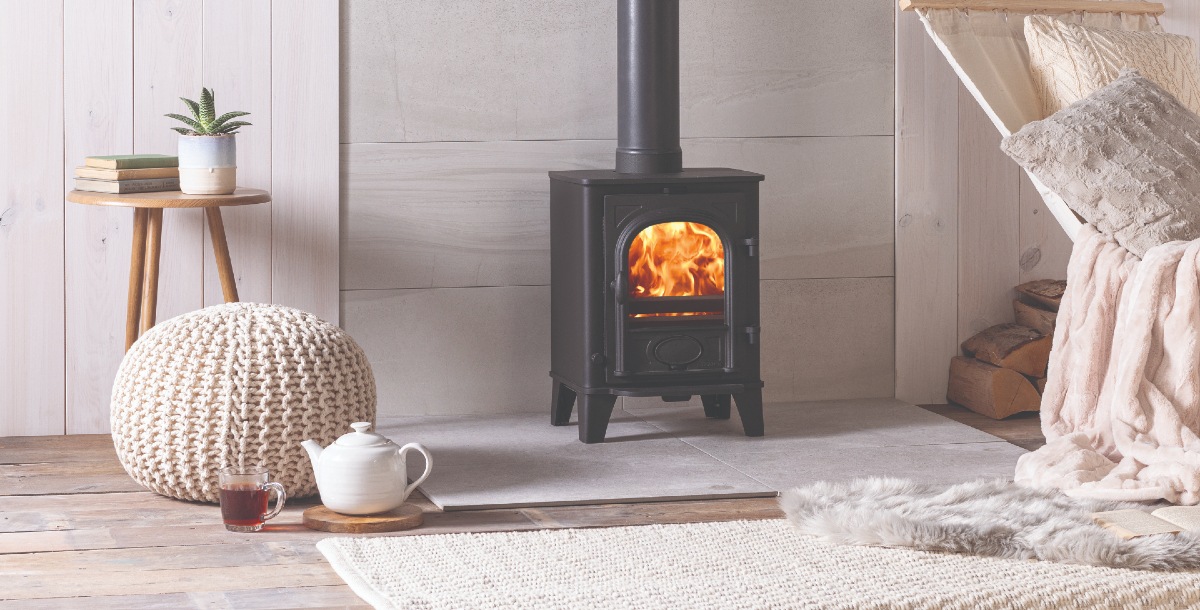Transforming a summerhouse into a cosy retreat with a log burner
Installing a log burner in your shed can transform it into a cosy retreat, suitable not just for storage but as a sanctuary in your own garden. This guide will walk you through the essentials of installing a wood burner, including regulations, types of stoves, and additional considerations to ensure a safe and efficient setup.
When installing a stove in either an existing fireplace or as part of a new build, the installation must comply with Building Regulations.
You will need to certify any installation into an existing fireplace under the Competent Person Scheme who will notify the local authority once the work is complete. If you do not use a competent person you will need to make an application to Local Authority Building Control.
If the work is part of a new build the local Building Control team must inspect the foundations and the construction of the chimney and hearth. And once the stove installation in the new fireplace is complete, a competent installer will certify and test the appliance.
In some instances, planning permission may also be required.
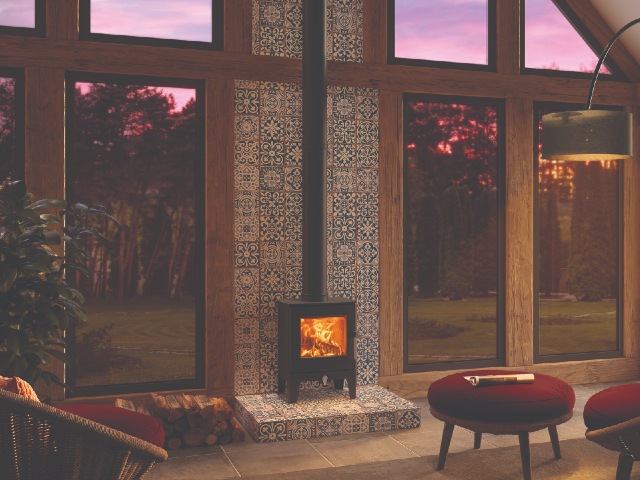
Stovax Futura 4 wood burning stove
What regulations do you need to adhere to?
It’s important to know that installing a real wood burner in your shed is allowed, but you must adhere to certain regulations and considerations. The most crucial regulation is BS8303:2018, the British Standard for the installation of domestic heating and cooking appliances burning wood and solid mineral fuels. This standard provides guidance for installers, ensuring safe and proper installation. Additionally, Building Regulation Approved Document Part J outlines the requirements for safe use and installation of heating appliances, including chimneys and flues. Following the manufacturer’s instructions is also vital, particularly regarding installation clearances to combustibles, to prevent fire hazards.
What flue do you require?
Choosing the right flue is essential for the effective operation of your wood burner. A twin-wall pre-insulated flue system is recommended, such as Stovax Professional XQ. A powered flue fan might be needed if your flue’s termination height is below the advised 4.5 meters, to ensure adequate draft.
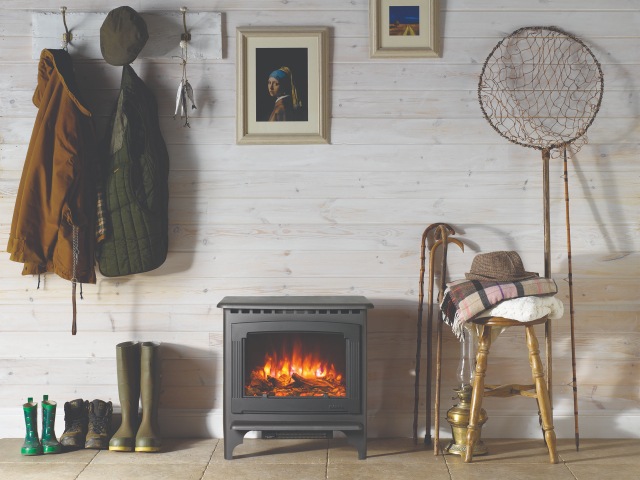
Gazco Marlborough2 electric stove
What heat output do I need from a stove for my shed or summerhouse?
Heat output is calculated with a number of factors in mind – insulation, windows, etc. Generally, you’ll need 1kW of heat output for every 14 cubic meters of space to achieve a room temperature of around 21°C when it’s 0°C outside. However, consulting with a local retailer for expert advice is best to account for any variables influencing the required heat output.
Ideally, the stove’s output should not exceed 7kW. Installing an overly powerful stove can complicate its operation and may result in accumulation of soot in the flue. Additionally, larger output appliances typically need much more significant distances from combustible materials.
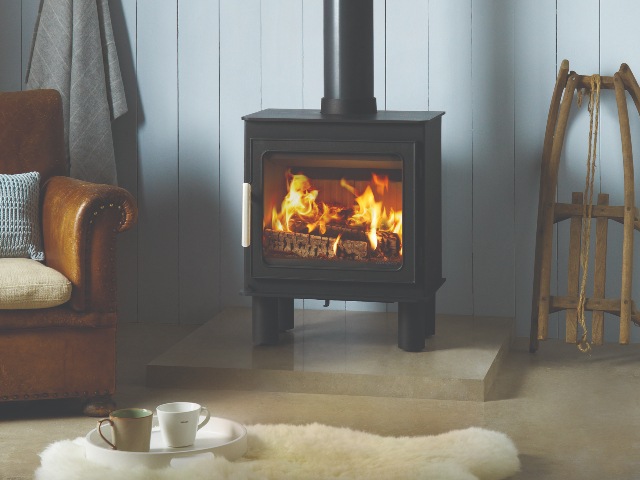
Nordpeis Bergen wood burning stove
Will a damp environment damage my log burner?
Moisture can pose a threat to your appliance, potentially causing rust over time. Keeping the air dry with a dehumidifier or silica gel, and ensuring good airflow through the stove when not in use, are good practices to protect your investment. Remember, burning treated wood or sawdust is not recommended due to the harmful gases they emit. For burning sawdust, a specialist ‘workshop stove’ is needed.
What other options are there aside from a wood burning stove?
For those considering alternative heating options, electric and gas log burners present viable alternatives. Electric stoves require a proper electrical installation and can be a great choice for sheds and summerhouses, only needing connection to a safe mains supply to function.
Should your shed or summerhouse be susceptible to moisture, setting the stove on a timer can effectively lessen or completely remove the dampness. To proceed with this method safely, make certain there are no leaks within your shed and that the appliance is not at risk of coming into contact with water. Additionally, maintain an adequate distance between the electric stove and any walls that may attract moisture.
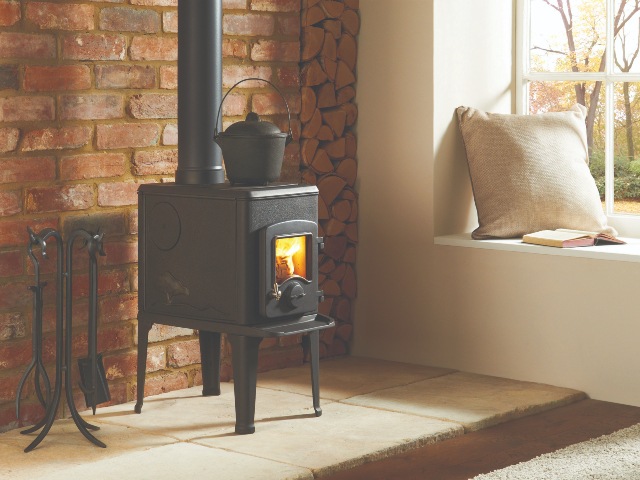
Nordpeis Orion log burner
Installing a gas stove in your shed
The installation of a gas log burner in your shed requires an assessment tailored to the specific conditions of your shed. Installers will evaluate several key factors:
Moisture: While certain components of a gas stove are designed to resist corrosion from moisture, other parts may not fare as well in damp conditions commonly found in sheds during winter. Should you opt for a gas log burner, it might be recommended to first address any issues of dampness and leaks in the shed.
Gas Supply: Installing a gas line to your shed can be more complex and expensive if there isn’t easy access to a gas supply nearby.
Wildlife: The risk of small insects or spiders making homes in parts of the burner could pose significant safety concerns, an issue not typically encountered with traditional wood burners.
If your shed is more like a domestic space, fully insulated and protected from the elements, the installer’s evaluation may differ significantly.
Enhancing your shed or summerhouse with a log burner adds warmth and atmosphere, making it a more inviting space. Whether you prefer the traditional charm of a wood burner or the convenience of an electric stove, there’s a solution to make your garden retreat comfortable and welcoming.
Find your nearest stove retailer at www.stovax.com/retailers

